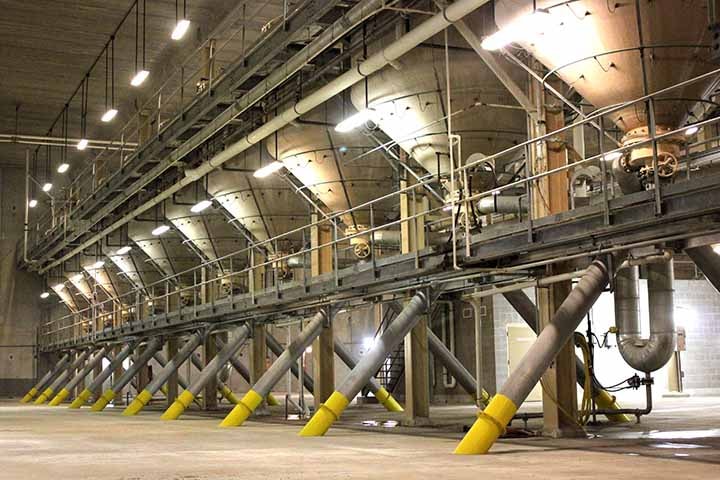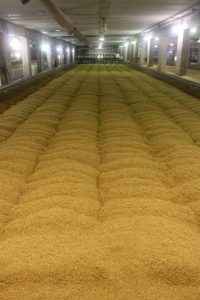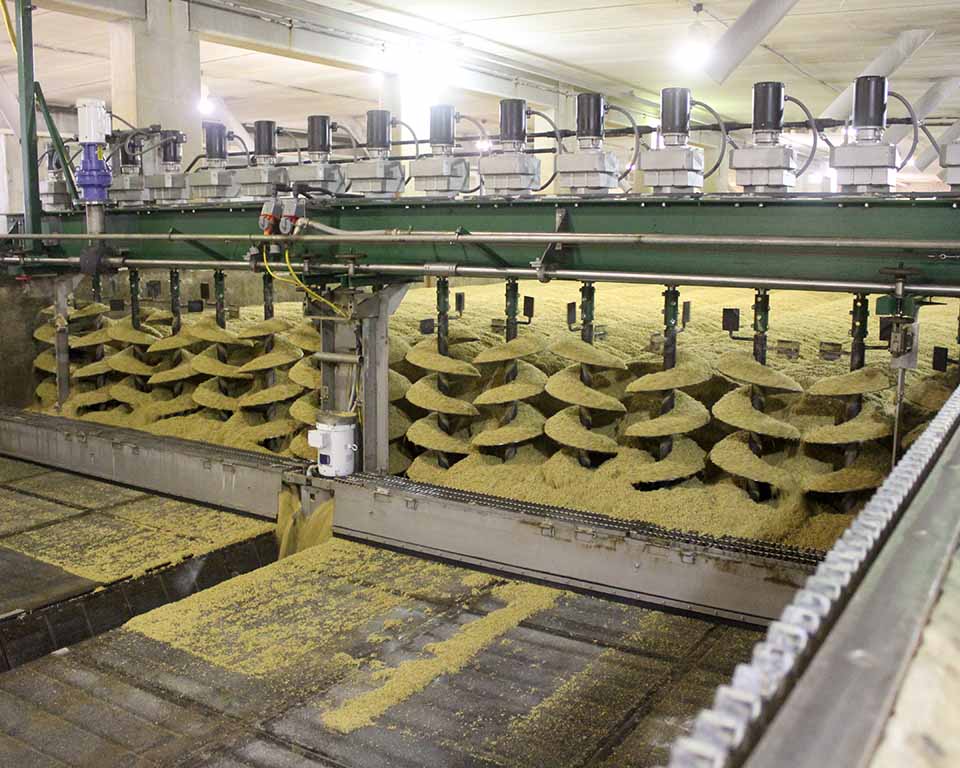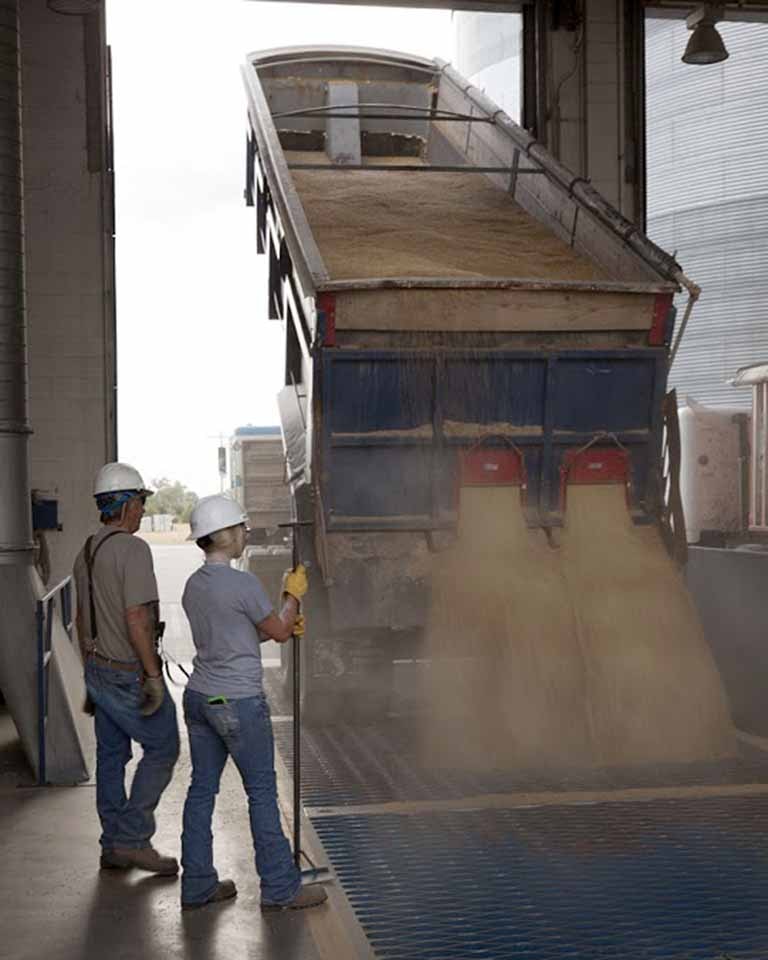

January 5 marked a historic day for Briess. That’s when we officially commissioned our third and largest malthouse, ceremoniously flipping the “on” switch and sending 432,000 pounds of cleaned and graded barley to steeping for its first batch. Not only does this 65,000-metric-tonne malthouse more than double Briess malting capacity, it gives Briess complete control over our entire malting barley supply chain and all malted barley products we sell — “From Seed to Suds” we like to say.
We have been moving in this direction for almost 10 years, reaffirming this company’s ongoing dedication to helping American craft beer continue to grow.

2013 WY acquisition secured
raw material supply, storage capacity
About 10 years ago it became apparent that the broker system of selling raw barley was drying up, a victim of the rapidly changing North American barley market. In response we partnered with Riverland Ag, an experienced grain storage and handling company that began contracting our barley needs for us. That led to our March 2013 acquisition of the Briess Wyoming Barley Operation.
Located in the unique, rich agricultural Bighorn Basin, the operation is supported by a large network of experienced WY and MT barley growers and anchored by modern barley processing and storage facilities at Ralston and Powell, WY. Located on the Burlington Northern Railroad, the operation is capable of processing 4.1 million bushels at harvest and storing 2.3 million bushels onsite. It supplies Briess with a consistent source of high quality raw malting barley, with room for increased acreage. This past growing season Briess contracted with 260 growers. In 2015 we anticipate that increasing to more than 300.
2014 Manitowoc acquisition
added storage capacity
Last year Briess secured sufficient grain storage with the acquisition of a 4.3-million bushel barley storage/cleaning/grading and former malting operation in Manitowoc, WI. This facility is modern and efficient, with an interesting history. It’s the original location of Rahr Malting Company. Two of its six malthouses were built in the late 1800s. In 1962 the Rahr family sold the 23-acre complex to a large U.S. brewery, which invested heavily in equipment and built a modern, efficient malthouse. All six malthouses were decommissioned when the complex was sold about four years ago for grain storage.
The Manitowoc location is a good fit with Briess. It added 176 individual storage bins, provided the ability to clean and grade barley for malt processing, and allows us more flexibility to segregate barley by quality and variety parameters. It’s a natural add-on following the previous year’s acquisition in Wyoming. With direct railroad service and the ability to unload ships, it directly links to the Briess Wyoming Barley Operation, various other barley sources and Briess malthouses in Chilton and Waterloo, Wis. It’s also conveniently located 35 miles east of Chilton, on the shore of Lake Michigan.
2015 malthouse commissioning
more than doubles malting capacity
We became aware that the newest of the six Manitowoc malthouses could be brought back online. After evaluation, engineering and refurbishing, the efficient “Malthouse 6″ is now producing high quality base malt and more than doubles Briess malting capacity.
Here’s a quick breakdown of current Briess malting capabilities:
- Chilton Malthouse—60,000-lb batches, for small-batch production of kilned and roasted malts.
- Waterloo Malthouse—216,000-lb batches, for medium-batch production of kilned and roasted malts.
- Manitowoc Malthouse—432,000-lb batches, for large scale production of base malt.
What this means
to American craft beer
Our approach to supply chain control has been as unique as our business plan, designed to bring added benefits to craft brewers and help American craft beer grow. Here are a few benefits from Briess that come to mind.
- Briess has a large supply of high quality 2-Row malting barley in 2015. Since a great deal of our barley is grown in regions of WY and MT that were spared severe weather conditions this past growing season, Briess malt will be high quality and in good supply.
- Briess has alternate uses for 2-row barley rejected for brewing. North American maltsters dedicated to the production of malting barley for brewing will need to blend lower quality barley with high quality barley prior to malting. That’s not the case at Briess. We produce many styles of food-grade extracts which are effectively produced from malting barley rejected for brewing. As a result, malting barley that was pre-sprouted this year will not be sold as malt for brewing.
- Less handling. Direct rail shipments from grower to storage/cleaning to malting result in less handling of raw barley and finished malt.
- We have more malting capacity available in Wisconsin. Two more of the six Manitowoc malthouses can be brought online when demand calls for it.
- There’s room for malting capacity in Wyoming. We recently more than quadrupled acreage at the Briess Wyoming Barley Operation, making it possible for Briess to expand in the west.
- Continued focus on developing new craft-centric malting barley varieties. Briess has expanded its barley variety development program in Wyoming, partnering with the nearby University of Wyoming Research and Extension Center which has 220 acres of test plots for testing and scaling up new varieties. Briess remains an active AMBA member, supporting efforts to develop new barley varieties for American craft beer.
Since the pioneer days of American craft beer, Briess has embraced the small-scale production of artisan beers and developed unique malts and services to help it grow. Taking control of our supply chain is another step in that direction.




